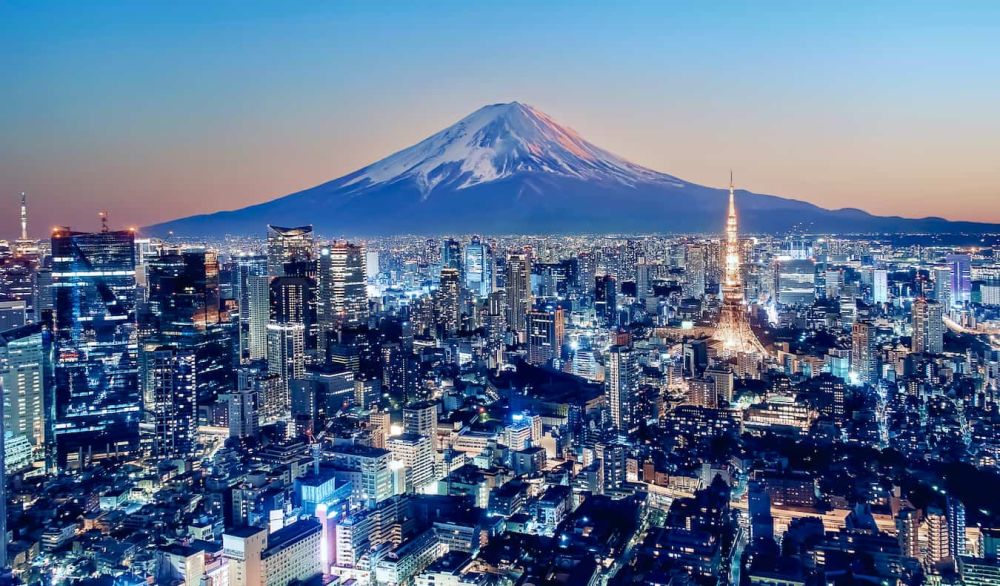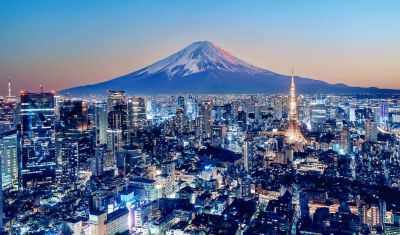

Tokyo Skytree is an iconic structure in the Tokyo skyline and stands as the tallest building in Japan and the second tallest structure in the world. It offers breathtaking panoramic views of the bustling city from its observation decks, located at 350 and 450 meters respectively. The Skytree complex also features a large shopping and entertainment center that includes an aquarium, a planetarium, and numerous restaurants and shops that cater to all tastes and preferences. In addition to its stunning views, the Skytree serves as a broadcast tower for television and radio. Visitors can learn about the history and technology behind this marvel of engineering, making it an educational experience as well as a visual treat. It's recommendable to visit during both daytime and nighttime as the cityscape is distinctly beautiful at each time and the tower itself is illuminated with changing colors after sunset.
Senso-ji, located in the historic Asakusa district, is Tokyo's oldest and most significant Buddhist temple, attracting millions of visitors each year. The temple’s entrance is marked by the majestic Thunder Gate (Kaminarimon), which leads to a bustling shopping street known as Nakamise, where you can find traditional crafts and snacks. The main hall and the five-story pagoda provide a glimpse into Japan’s rich cultural heritage. The temple complex is especially vibrant during Sanja Matsuri, one of Tokyo's three great Shinto festivals. Guests are immersed in a spiritual ambiance as they explore the temple grounds, light incense, and say a prayer, making for a memorable cultural experience that contrasts with the city's modernity.
Nestled within a tranquil forest in the heart of bustling Tokyo, the Meiji Shrine is dedicated to Emperor Meiji and Empress Shoken. The shrine features a blend of spacious courtyards and serene paths surrounded by around 100,000 trees that make up Meiji Jingu's forest. Visitors are greeted by a towering torii gate, indicating the entrance to this sacred space. Within the grounds, there's also a treasure house that contains royal artifacts and the Inner Garden which is known for its irises that bloom in June. The Meiji Shrine is not just a tourist spot, but an active religious site where traditional Shinto weddings and seasonal festivals occur, providing an opportunity to witness Japanese culture firsthand.
Ueno Park is a spacious public park that serves as a hub for culture, nature, and history. It is where you can find several museums, including the Tokyo National Museum, National Museum of Nature and Science, and the Ueno Royal Museum. Moreover, the park boasts a zoo that is home to a myriad of animals, including the beloved giant pandas. During spring, Ueno Park is one of Tokyo's most popular cherry blossom spots, with more than 1,000 cherry trees lining its central pathway. The blend of recreational and educational attractions makes Ueno Park an excellent destination for families, history buffs, and nature lovers alike. It's a perfect spot to unwind, enjoy a leisurely picnic, and immerse in Japanese culture.
Shibuya is Tokyo's youth fashion hub, known for trendy shops and boutiques, bustling nightlife, and the iconic Shibuya Scramble Crossing, arguably the world's busiest pedestrian crossing. In addition to shopping at department stores like Shibuya 109, visitors can experience the lively street culture, cutting-edge fashion, and diverse dining options. The Hachiko Statue, a monument to the faithful dog Hachiko, is a popular rendezvous spot just outside Shibuya Station. Shibuya's vibrant atmosphere epitomizes modern Tokyo and offers visitors a chance to immerse themselves in a sensory overload of sights, sounds, and tastes. Evening hours are especially dynamic as the area lights up with neon signs and television screens, and the crossing buzzes with activity.
A cruise on Tokyo Bay offers a unique perspective of the city's skyline, including views of Rainbow Bridge, Odaiba, and the waterfront district. Whether you opt for a traditional yakatabune boat with tatami mats and a full-course meal or a sleek modern vessel, the cruise is an enjoyable way to experience the charm of Tokyo from the water. Some cruises offer a night view where you can enjoy the illuminated cityscape or even themed events such as fireworks viewing parties. The calm waters of Tokyo Bay provide a serene escape from the fast-paced city life, making this activity ideal for couples seeking a romantic experience or anyone who wants to see Tokyo's landmarks from a different angle.
The Edo-Tokyo Museum is a journey through the history and culture of Tokyo, starting from its early days as Edo. The museum features life-size and scale models of townscapes, houses, and artifacts from different periods, providing an in-depth view of societal transformation over the centuries. Interactive exhibits allow visitors to experience traditional culture, such as crossing the Nihonbashi bridge or visiting a theatrical performance. The museum's well-documented exhibits cover a variety of aspects including politics, culture, and the daily life of the people. It is an enlightening experience that gives context to the evolution of this metropolis and educates on the resilience of Tokyo through times of peace and disaster.
Odaiba is a popular entertainment and shopping district on a man-made island in Tokyo Bay. Odaiba Seaside Park offers a relaxing escape with its wide seaside promenade, sandy beaches, and clear views of the Rainbow Bridge. It's a recreational area where visitors can enjoy a leisurely walk, rent a bike, or participate in water activities. With a backdrop of futuristic architecture, Odaiba is home to attractions like teamLab Borderless, the giant Unicorn Gundam Statue, Palette Town, and the Ooedo-Onsen Monogatari hot springs. The palette of leisure activities available in Odaiba makes it an enjoyable spot for families, friends, and couples to soak in Tokyo's modern leisure-oriented culture while having a picnic or watching the sunset over the skyline.
The Imperial Palace, the primary residence of the Emperor of Japan, features stunning gardens that are part of the inner palace area and provide a peaceful retreat within Tokyo's central Chiyoda district. The East Gardens are open to the public and include classical Japanese garden designs with ponds, stone bridges, and carefully manicured trees along with historical structures from the former Edo Castle. Although the inner grounds of the palace are not generally open to the public, they are accessible on special occasions like the Emperor's birthday and New Year's Greeting. The gardens are a showcase of traditional Japanese landscape design and an aesthetic feast for garden enthusiasts and those seeking tranquility amidst the city's fast pace.
The Tsukiji Outer Market remains a lively area filled with narrow lanes hosting over 300 shops and restaurants offering fresh seafood, produce, and a diverse selection of specialty foods and kitchenware. Following the move of the wholesale operations to Toyosu Market, Tsukiji has transitioned into a retail haven where visitors can taste freshly prepared sushi, sashimi, and a wide array of Japanese delicacies like tamagoyaki (Japanese omelette), sea urchin, and mochi. It's the perfect place to experience the culinary delights of Tokyo, participating in food tastings and learning about local ingredients. A visit to Tsukiji Outer Market is a sensory adventure where you can witness the bustle of fishmongers and chefs and indulge in some of the freshest seafood available.
